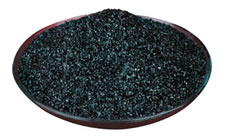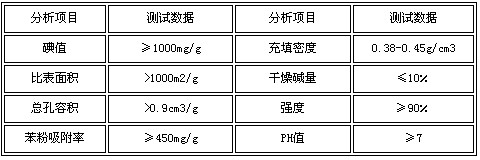The shell Activated Carbon is made of high quality coconut shell, Walnut shell, apricot shell and peach shell, and is refined by a series of production processes. The appearance is black granular. The utility model has the advantages that the pore structure is developed, the specific surface area is large, the adsorption performance is strong, the reservoir layer has small labor force, the chemical property is stable, and the regeneration is easy. It is suitable for deep purification, dechlorination, decolorization, deodorization and gold refining of high-purity drinking water, industrial water and wastewater treatment.

Shell shell activated carbon
Properties: Granular Activated Carbon for adsorbing gases and vapors. Must have mechanical strength, no dust, strong adsorption capacity. It is used for the separation of natural gas, petroleum gas and other gases, the recovery of solvents such as benzene, ethanol and ether, the purification of carbon dioxide, hydrogen, nitrogen, ammonia, acetylene, etc., the selective adsorption and purification of vitamins, hormones, antibiotics, etc., and as chlorine. A carrier or the like of an ethylene polymerization catalyst. There are two types of shaped granular carbon (cylindrical, spherical, etc.) and amorphous granular carbon. The amorphous carbon powder is produced in the same manner as the general activated carbon, but the particles have a certain size range. The shaped granular carbon is produced by pulverizing the carbonaceous material into a powder, mixing it with tar or other adhesive, pressing it into a pellet on an extruder, and then activating it at a high temperature with steam, carbon dioxide or flue gas.
Black granular porous solid. According to the shape, it can be divided into two types: fixed granular activated carbon and amorphous granular activated carbon, and the specific surface area is between 500 and 1400 m 2 /g. The method for preparing shaped granular activated carbon is to pulverize carbonaceous materials such as anthracite into powder, mix with tar or adhesive, form on an extruder, and then activate with steam, carbon dioxide or flue gas at a high temperature of 850-900 ° C, and finally Washed and dried to get the finished product. Granular activated carbon is acid-resistant, alkali-resistant, heat-resistant, has good chemical stability and mechanical strength, and is the most commonly used adsorbent. Mainly used for gas purification, solvent recovery, decolorization, deodorization, adsorption purification, wastewater treatment and catalyst carrier.
Physical and chemical performance analysis: (pictured)

Uses: Granular activated carbon for adsorption of gases and vapors. It is used for the separation of natural gas, petroleum gas and other gases, the recovery of solvents such as benzene, ethanol and ether, the purification of carbon dioxide, hydrogen, nitrogen, ammonia, acetylene, etc., the selective adsorption and purification of vitamins, hormones, antibiotics, etc., and as chlorine. A carrier or the like of an ethylene polymerization catalyst.
Preparation or Source: The amorphous carbon powder is produced in the same manner as general activated carbon, but the particles have a certain size range. The shaped granular carbon is produced by pulverizing the carbonaceous material into a powder, mixing it with tar or other adhesive, pressing it into a granule on an extruder, and then activating it at a high temperature with steam, carbon dioxide or flue gas.
Remarks: It must have mechanical strength, no dust, and strong adsorption capacity. There are two kinds of shape and shape.
Polyaluminum Chloride,Anionic Polyacrylamide,Polyacrylamide Pam
Carbon Additive,Activated Carbon Co., Ltd. , http://www.xjactivatedcharcoal.com